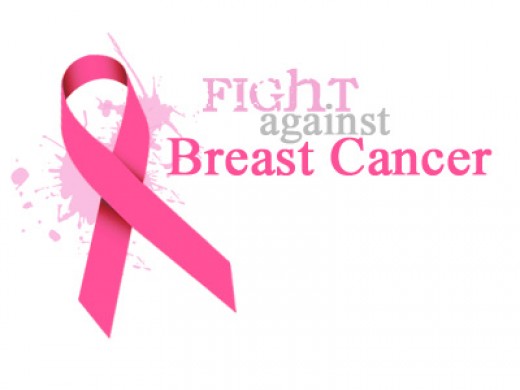Breast Cancer – All You Need to Know!

October has been dedicated to Breast Cancer Awareness month. Even though this is the most common form of cancer that does not mean this is any less scary or not fatal if not detected and treated at the correct time. We know of many families whose lives have been destroyed by this devastating disease.
Since October is celebrated as the Breast Cancer Awareness Month; we thought it would be prudent to come up with a bunch of questions regarding the matter. For the answers we got in touch with the esteemed Dr. Manon Pillai. She is a Clinical Researcher with The Christie NHS Foundation Trust, Manchester. We asked her questions that are pertinent to the subject so that our readers can have a basic concept about the matter.
Please feel free to mention in the ‘reply box’ about any questions that you think we might have missed.
What is breast cancer?
Breast cancer is the abnormal and uncontrolled growth of breast cells to form a malignant tumor.
It is not one single disease and there are several types of breast cancer. It can be diagnosed at different stages and can grow at different rates. People can have different treatments depending on they type and stage of breast cancer they have and on what will work best for them.
Are all women susceptible to breast cancer and what are the causes?
Whilst all women are susceptible to breast cancer, not all women will develop the condition. Exactly why some women develop breast cancer and others don’t is not yet fully understood and most cancer development is purely by chance.
Research has shown that certain factors can increase or decrease the risk of a woman developing breast cancer. These are known as ‘risk factors’. However, the presence of these risk factors does not mean that breast cancer will develop as a certainty. A woman may have multiple factors and not develop cancer, whilst another woman may have only a few risk factors and still develop cancer
The three main risk factors for developing breast cancer are factors that are beyond our control. They are:
- Being a woman
This is the largest risk factor for developing breast cancer. While men are born with some breast cells and tissue, over 99% of breast cancers diagnosed globally are in women.
- Getting older
As we get older our risk of developing breast cancer is higher, with the majority of cancers occurring in women over the age of 50. This however does not mean that women under the age of 50 cannot develop the breast cancer.
- Having a significant family history of the disease
For most women, having a relative with breast cancer does not increase risk of developing cancer, as most cancers arise by chance. However, some types of breast cancer can be inherited, with the genes responsible for the disease being passed from parent to child. There are 3 known breast cancer genes BRCA1, BRCA2 and TP53 and together they account for 5% of people diagnosed with breast cancer.
There are other smaller risk factors associated with female hormone exposure, but these contribute significantly less to a woman’s risk of breast cancer that the three listed above.
What are the symptoms of breast cancer?
Many of the symptoms associated with breast cancer are also associated with non-cancerous breast conditions. These non-cancerous, or benign, conditions are very common and are likely secondary to the changing levels of female hormones in the body as a woman moves through puberty, pregnancy and then the menopause. Many women who discover changes in their breasts on self-examination will be diagnosed with a benign breast condition and further treatment may not be necessary. It is therefore very important that any changes or symptoms found in the breasts should be discussed with a doctor as they can decide on the best investigations.
Common symptoms associated with breast cancer are:
- a change in appearance of the breast, either in shape or size
- a lump or thickening in the breast
- a rash or change in skin colour over the breast or around the nipple
- a change in the feel of the breast with puckering or dimpling of the skin
- a change in the nipple either with a discharge (liquid) that comes from the nipple without squeezing, or the nipple changing shape or becoming inverted
- a lump or swelling in the armpit or around the collarbone
- a constant pain in the breast or your armpit without any known injury
Cancer can also sometimes cause more general symptoms such as tiredness, having a decreased appetite and losing weight. Again, these symptoms should be discussed with a doctor.
How can a person check for symptoms at home before going for tests?
It is very important for women of all ages to be aware of breast cancer and of their own risk. Breast cancer can be curable but the best chance of successfully achieving a cure is in the early stages of the disease. Therefore it is important that any changes in the breast are identified and investigated quickly.
Women of all ages should regularly check their breasts for any changes and this can be done through self-examination. This can be done in the bath or shower, when getting dressed, when applying body lotion, or at anytime that suits you best. There is no right or wrong way to examine the breasts but its important to check all parts of both breasts, both armpits and up to the collarbone.
Everyone’s breasts are different with some people having lumpy breasts or breasts that are different shapes or sizes. Its important to identify what is normal and to be aware of any changes that are new and different. Finding any changes in the breasts does not automatically mean a diagnosis of breast cancer and many women worry unnecessarily about changes that will likely be non-cancerous. Any changes should be discussed with a doctor who will then decide if further investigations are needed.
Is it curable with medication or surgery?
Breast cancer can be curable, especially if it is caught early (known as early stage breast cancer).
To treat breast cancer, a many different types of therapies may be needed and these include:
- Surgery
- Chemotherapy
- Radiotherapy
- Hormone therapy
- HER-2 targeted therapies such as herceptin
A woman may need a combination of these therapies in order to achieve the highest chance of a cure and reduce the risk of the cancer returning in the future. Not everyone’s breast cancer will be the same therefore different women may need different therapies to ensure they are receiving the best treatment. It is likely that a team of different doctors, including surgeons and oncologists, will be involved in providing the treatment.
Is there a chance that even though a person is diagnosed with early stage breast cancer and receives treatment that this type of cancer can come back?
Unfortunately, even with the variety of therapies that are now available to treat early stage breast cancer, there is always a risk that the cancer can come back, or recur, in the future. The risk of this is dependent on a number of factors, the most of which are related to the initial diagnosis (such as the size of the tumour, if there were any lymph nodes involved and other factors).
If the cancer comes back, it can come back locally, in the breast tissue, or somewhere else in the body, such as the lungs, liver or bones. When the cancer has spread it is known as metastatic breast cancer. In some women the cancer will have spread like this when they first see a doctor.
The ability to cure metastatic breast cancer is less than with early stage breast cancer. However there are multiple treatments available that can help to control and slow down the spread of cancer. These treatments help to control any symptoms and improve overall quality of life for as long as possible.
What could we do to prevent breast cancer?
Much research has been conducted into methods to reduce the risk of breast cancer.
Exercising regularly and eating a healthy balanced diet is always recommended as it helps prevent many medical conditions such as heart disease and diabetes along with many forms of cancer.
Some clinical studies have suggested that women who breastfeed are less likely to develop breast cancer than those who do not. In some countries, hormonal drugs or even preventative surgeries may be offered women who due to their family history have a high risk of developing breast cancer.
There has been much focus also on earlier detection of breast cancer and certain countries have screening programs where healthy women over a certain age, or with a significant risk of developing breast cancer, are tested for early signs of breast cancer developing. A test called a mammogram using X-ray, or an ultrasound scan of the breasts, is conducted and if an abnormality is seen, further investigations are carried out. In countries such as the UK, this has lead to more women being diagnosed with smaller cancers earlier and has resulted in improved survival rates.
What is the average breast cancer survival rate?
More women are surviving breast cancer now than ever before. Our increased knowledge of how the disease develops and behaves has lead to better drug treatments and further research is always ongoing.
Breast cancer survival rates vary from country to country. Higher rates of survival, with nearly 80% of women surviving 10 years, are seen in North America and the UK while middle and low-income countries report lower survival rates (WHO). The difference in these statistics is likely due to the early detection screening programs and therefore early presentation seen in Western countries.
Early detection and diagnosis is key, therefore through improving women’s understanding of breast cancer and through talking about breast cancer, these survival rates should improve further.
Image Courtesy – National Association of Graduate Teachers,Ghana (Main Image)
- team_itemmom
- October 25, 2016
- 0 Comment







